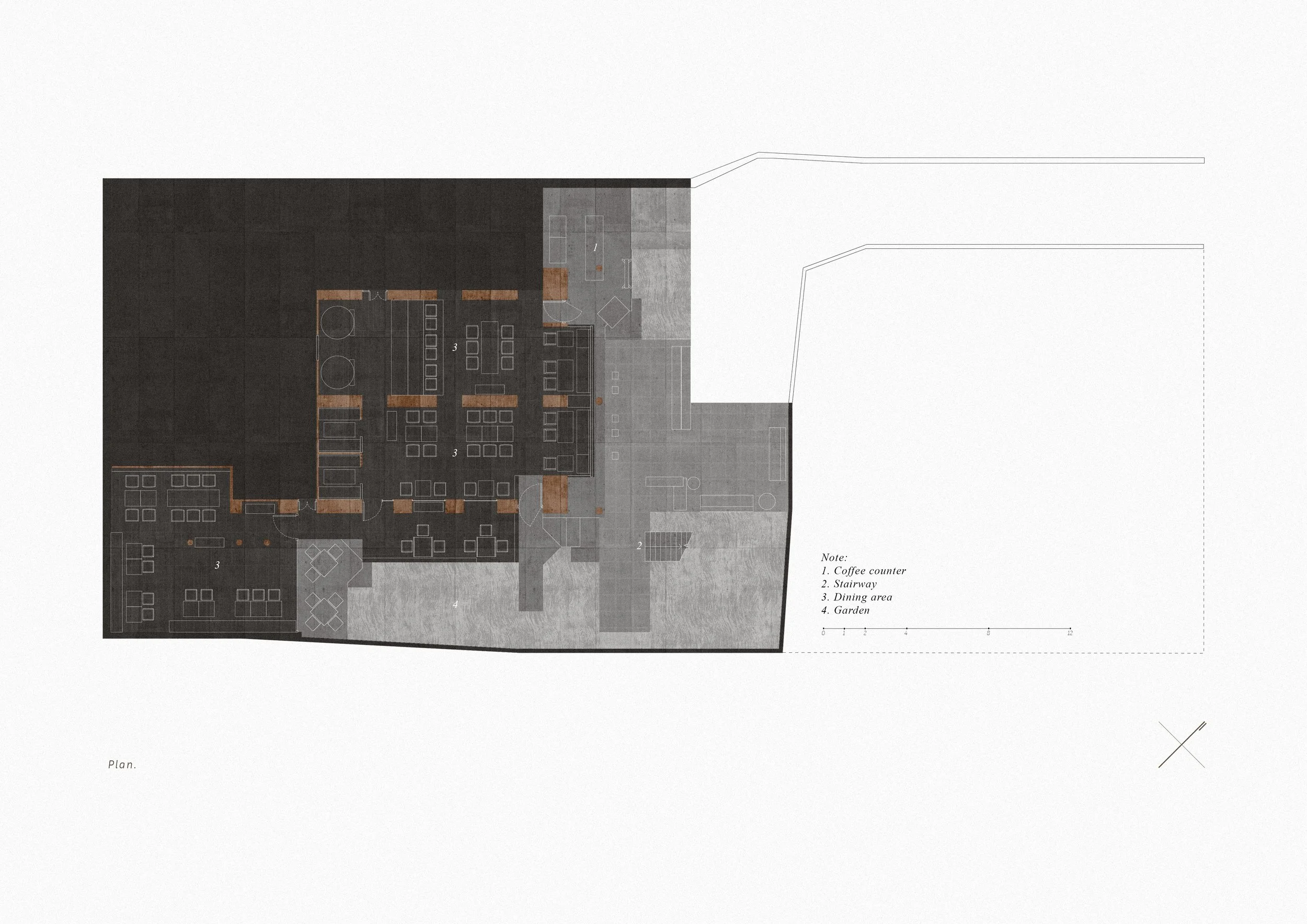Pizza 4Ps Restaurant - Renovation
Location: Hai Ba Trung, District 1, Ho Chi Minh, Viet Nam
Year of completion: 2024
Area: 500sqm
All plans, illustrations and visualisations © PRAXIS 324
All photos: © Praxis324
The renovation project represents an extension of an existing restaurant known as Restaurant of Shade. After seven years of operation, the client comeback with a request for an expansion to meet the evolving needs and ambitions of their ever-growing business vision.
When the project was first undertaken in 2018, the focus w.as on the ground floor, where we experimented with creating an unconventional dining space. Furniture, greenery, and people coexisted under a vast canopy made from agricultural mesh, a material typically reserved for farming applications. This concept proved to be remarkably successful, warmly embraced by diners for the novel and meaningful experiences it provided during their visits.
For this renovation, the client aimed to further promote public appreciation for urban voids and to foster a lifestyle that respects and harmonizes with nature.
Revisiting the Spatial Identity of Two Floors
In approaching this new design challenge, we were tasked with addressing a previously missing experience not offered on the ground floor. This led us to identify two distinct characteristics that define each floor's unique personality:
The ground floor is a space that connects with the primal essence of the site—its innate nature.
In contrast, the upper floor offers an intellectual and abstract engagement, encouraging observation and contemplation of "nature."
The Core Design Approach
Our renovation concept centered around three primary elements:
The existing partitions of load-bearing walls.
Physical circulation—pedestrian pathways.
A spatial dialogue with the surrounding environment.
The Upper Floor: Passive Enjoyment Through Shade
The architecture of the upper floor encourages passive enjoyment of beauty, where the interplay of shadows fosters comfort and control. Users are invited to carve out their own defined space within a setting designed for effortless adaptability.
The Ground Floor: Active Exploration and Optimistic Openness
Conversely, the ground floor emphasizes movement and discovery. Architecture becomes a medium for understanding and shaping spatial principles, embracing the unpredictable dynamics of the environment. Here, any direct connection or structural support between the ceiling and thick walls, or between interior and exterior, is considered a loss of the fluidity we sought.
Synthesis of Contrasts
The design process involved selecting and reevaluating the key elements that defined the original project. Questions were raised about their roles and interrelationships. The act of blending elements of diverse origins became a recurring theme throughout the process.
Actions such as fragmentation and integration, dissection and reconfiguration were guided by an instinctive pull towards the garden. Thin, translucent agricultural mesh was employed as a unifying language to connect the fragmented spaces, enabling a fluid dialogue between zones.
Notably, there is no direct connection—neither vertical circulation nor visual continuity—between the ground and upper floors. A single staircase leads outward to the garden, ensuring that the experience of each floor remains distinct and self-contained.
Spatial Freedom and the Undefined Journey
The resulting space is one of spontaneity, unconstrained by functional zoning imposed by walls. Visitors meander through the space organically, finding secluded corners or bustling garden spots in unpredictable ways.
A U-shaped circulation path links two isolated building masses, inviting pedestrians to perceive transitions between spatial states. The journey begins with a subtle elevation shift via three folded steps, leading to a concealed entrance, and culminates in a panoramic view of the central garden. Here, architecture, landscape, and urbanity coexist harmoniously. Thin steel rods and semi-transparent mesh ceilings subtly underscore this natural movement.
Movement as Transformation
While movement does not constitute a physical structure, it implies the transformation of a place and its significance. The physical presence of individuals in an undefined space, coupled with the perceptions they form as they traverse it, reshapes the landscape and redefines its meaning. This evolving relationship becomes the essence of the space we envisioned.
In this sense, the concept inherent in Restaurant of Shade—a temporary refuge—has found a fitting extension. It now includes a mechanism for transforming ephemeral experiences into lasting memories, thus enriching its own narrative.
































